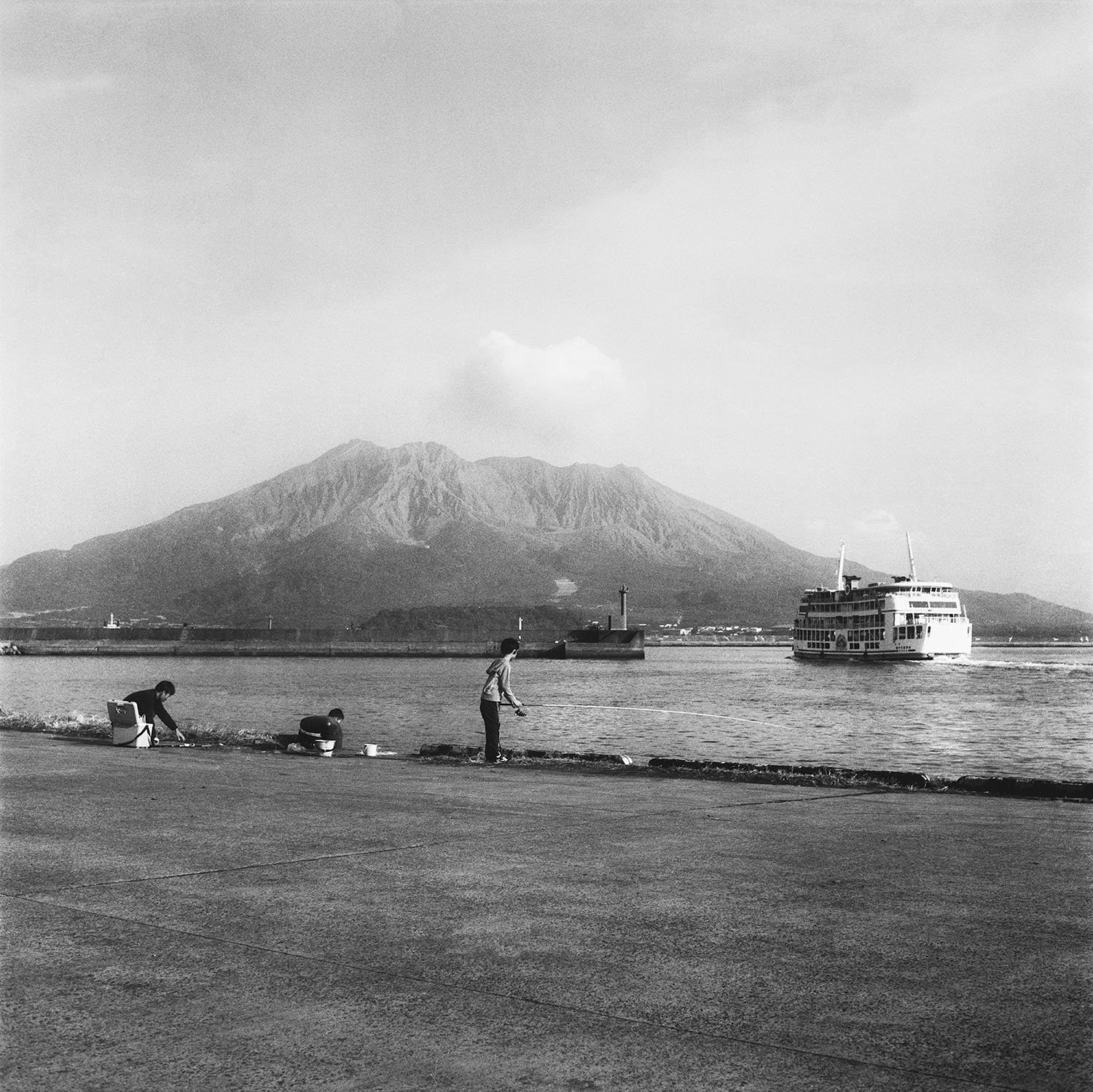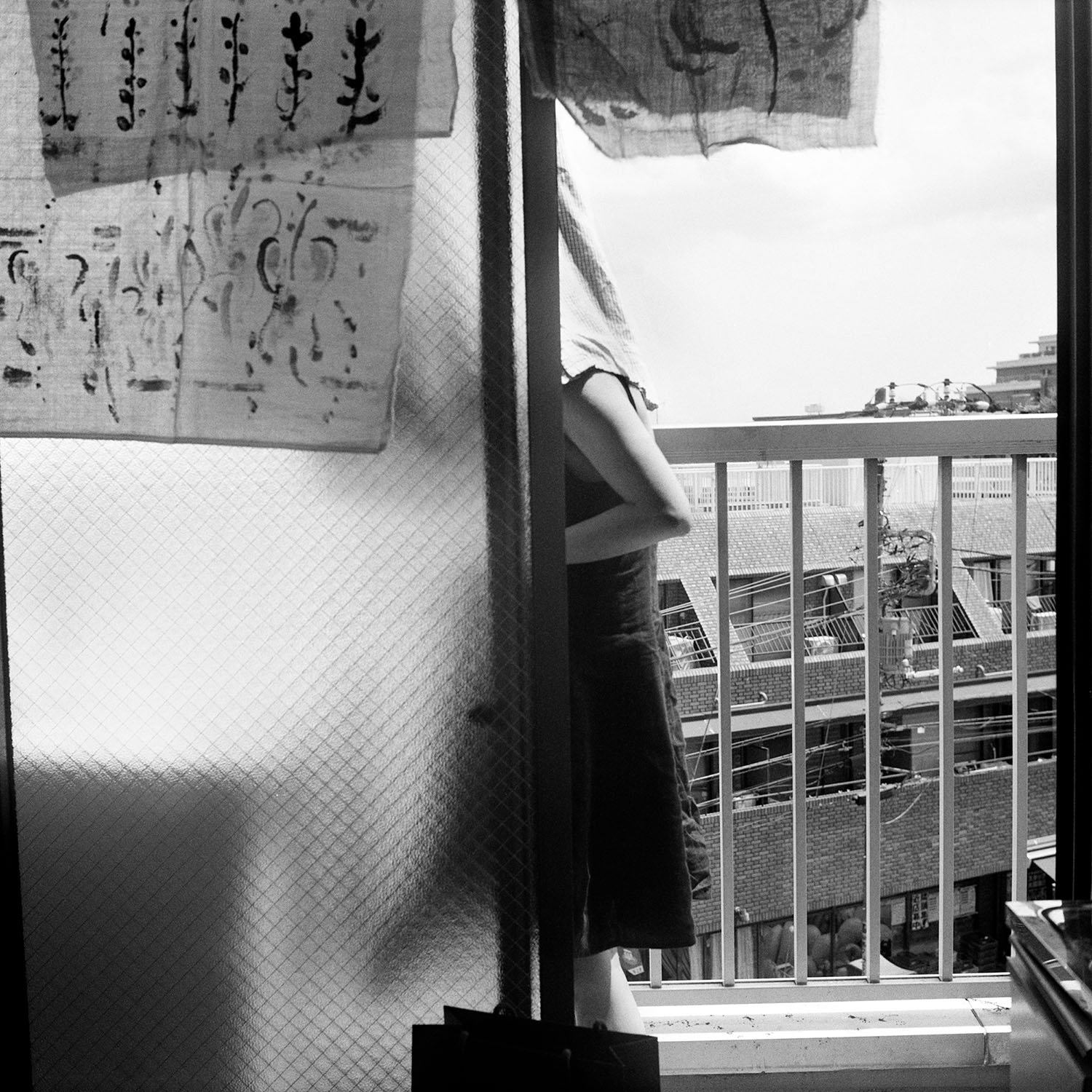Fin D'Automne
Fin D'Automne is the latest photo book of black and white images created by Olivier Kervern, a French photographer based in Paris. The collection was published by Soft Copy, an independent publishing imprint in New York, in the first edition of 400 copies after a successful launch at LE BAL Books in Paris. The project is a retrospect of three consecutive journeys Olivier took to Japan between 2015
and 2019. The viewer is invited to experience Japan through Olivier’s eyes — a stranger in a foreign country, learning about the people and culture, strolling the streets and turning to the alleyways to discover different life. The subsequent two journeys include the love story with Nanako, who became Olivier’s wife and the main protagonist of Fin D'Automne, an unfinished narrative.
We speak with Olivier about how intuition can become a guide through the project, allowing to build the narrative. Olivier shares a story of meeting locals in Kyoto bars and learning about the city and its residents. Olivier shares his approach to creating a narrative and choosing images for the book, “The narrative is very subjective and it floats... Nothing is definitive, and nothing has an answer, just a movement of time.“ We discuss the work process with Soft Copy, from choosing the right paper to printing the book, and close the interview with the current state of working with color images.
Represented by Art.19 Agency
Published with Soft Copy Image engraving by Granon Digital Distributed throughout the EU/UK by Antenne Books
56 Pages31
Duotone Plates
24cm x 31cm
Duotone offset printed, clothbound hardcover. Linen thread bound. Blind embossed front cover with authentic tip-in image. Gloss black foil typography on spine and back cover. Black and white headband.
Special edition of 30 numbered copies, with signed 13cm x 18cm Silver Gelatin print hand print.
‘A book is an intuition of a narration that is very far and very close to/from you at the same time... Nothing too conscious, more like a part of a novel. I like the idea that a photobook could be a part of a novel.’
The Book
Hi Olivier, thank you for this opportunity to speak about your new book, Fin D'Automne. What made you decide to create a book that will encompass your three trips to Japan? Could you walk us through the initial steps and thoughts of turning your experience into a photobook?
The first time I went to Japan was for an assignment, and I got a chance to stay for a month. I travel a lot under the ‘fantasy’ of Japan. I love photographers like Issei Suda or Mitsugu Ōnishi and writers like Yukoi Mishima or Natsume Sōseki... When you travel to another country, you always confront the idea you had about this country... Actually, the journey starts when you destroy your own fantasy... Before you try to merge reality with the idea. So the first journey was alone and traveling through the country, just going from place to place following the intuition or advice of the people I encountered. I met Nanako, and traveling with her was absolutely different... I didn't have to try to manage things. When I was following her, I could be completely innocent in my feelings and emotions about places or people.
The first journey was in 2015 alone, and I kept the pictures I liked, not thinking I'll do something different than making prints. But going back in 2018 and 2019 made me continue something unfinished. I like the fact that you do some pictures, then you do some different pictures somewhere else for a while, then something makes you come back to the images and create a book... It's great like that because there's no willingness... Something makes you come back to this. A book is an intuition of a narration that is very far and very close to/from you at the same time... Nothing too conscious, more like a part of a novel. I like the idea that a photobook could be a part of a novel. Unfinished, starting after a few chapters and finishing before the last one... A book in a book in a way...
‘I remember going to a small bar in Kyoto one evening that I chose by accident or luck. And while I was at the counter, I heard a beautiful song. I asked the old guy the name of the singer, and he wrote it to me on a piece of paper.’
Japan
You traveled to Japan three times, discovering different cities but mostly living in Tokyo, including all the journeys in the book. How was Japan evolving from a trip to a trip for you? What was the most striking difference in cultures that perhaps became less noticeable each time?
So hard to say... I don't think it was something so obvious... The journeys were different. During the first one, I was alone, and the two others I was with Nanako... But I don't think there was a culture gap... I mean, in Japan or another distant country, everything is a permanent culture gap! For example, I remember going to a small bar in Kyoto one evening that I chose by accident or luck. And while I was at the counter, I heard a beautiful song. I asked the old guy the name of the singer, and he wrote it to me on a piece of paper. The next day I came back, and he played the album for me. The next day he offered me the LP. Then one customer asked me why I was here and what I was doing in Japan. I explained I was a photographer, and he told me that a famous local photographer owned a bar, but it was dusty and messy. So I went to this address and arrived at the bar. The photographer was behind the counter, and the only guest was his assistant, a young girl drinking with him. So I sat, and then we talked all night.
With Nanako, we rented a place in Tokyo to stay in the city... but Tokyo is huge, and it's difficult to make the difference between the districts. You feel it's different, but you don't know why... Even in the center of Tokyo, you can take the first turn left and arrive at a residential area with small buildings and houses... There are no sidewalks. It gives you a feeling of the countryside... I love this feeling.
‘Hard to explain, but it's like a rhythm and a sense of association of pictures that makes you feel what you're looking for... Looking for something that I cannot say in words actually, not precisely. Something emotional with a meaning.’
The Print
One of the most challenging parts of working on a book is probably creating a narrative of the images you decide to include. Could you take us backstage to what was important for you in working on the narrative, creating the order and the timeline for the images, and choosing the best-suited paper to form the needed experience?
Hard to explain, but it's like a rhythm and a sense of association of pictures that makes you feel what you're looking for... Looking for something that I cannot say in words actually, not precisely. Something emotional with a meaning...The narrative is very subjective and it floats... Nothing is definitive, and nothing has an answer, just a movement of time. I love Fernando Pessoa, the poet, who provides a sense that everything is about the feeling of life with nothing but his emotions... His life is real as anyone else's, but you cannot catch it. It's something evanescent, perhaps.
For the print, I was lucky to work with Brian Kanagaki from Soft Copy, who is a photographer and a graphic designer... So he understands all the sides of the making... He helped a lot with the paper. I always love to print on ivory paper for black and white, and Brian found the one we used for the book! Also, I went to a printer in Barcelona, where Brian worked for some time... So I was with people I trust.
‘I think I was photographing Nanako and nothing else when we were there... That's why I liked to mix the pictures with and without her... To make a narration that nothing is fixed or concrete... Traveling inside a traveling (a book inside a book).’
The Theme
Fin D'Automne is an experience of a different life, a different country, through the day-to-day life of the locals. It is also an invitation to view a more personal story of the development of your relationship with Nanako, whom you met in Paris and who became your wife. The cityscape becomes a background of your life, providing more intricate details and color to the time spent in Japan. What were the most significant elements you wanted to preserve and present in the book in terms of juxtaposition of the city life to the personal life? What was the emotional atmosphere you decided to create with the narrative?
It's maybe too simple, but I think I was photographing Nanako and nothing else when we were there... That's why I liked to mix the pictures with and without her... To make a narration that nothing is fixed or concrete... Traveling inside a traveling (a book inside a book). When you spend time abroad, especially with someone local, it's a strange feeling. You are there but not belonging, in between... You don't have a responsibility in a way... You can make mistakes, but it will be ok because you are a foreigner... It's like being mute, blind, or deaf... One sense is missing... And you are floating... So, of course, I was in Japan, but also I was somewhere else from where I lived, and I was sort of passing by. You also share things and have a relationship. Maybe what was important was a shared emotion of being there, and the difference could be smaller than what we think. When you are abroad, everything is very personal in a place where nothing is personal.
Next Steps
What are you working on today, or what are the new themes you’d like to research?
I've been working with color for some time now, but I am not sure where I’m heading...














